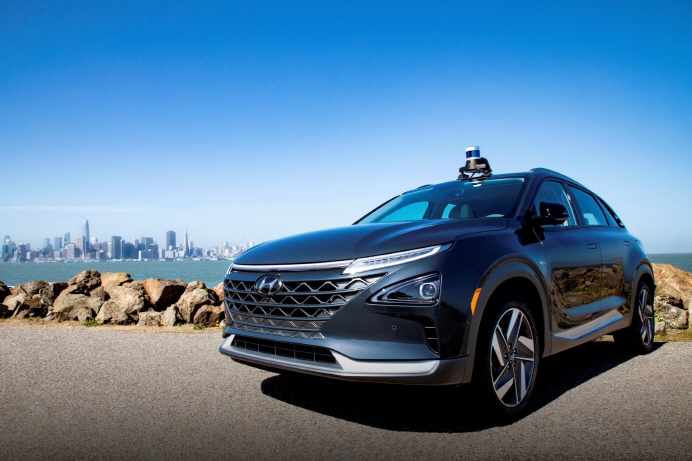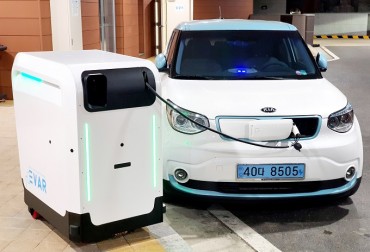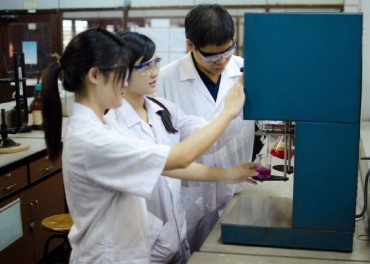
Hyundai Motor’s Nexo hydrogen fuel-cell electric car equipped with Aurora’s self-driving system. (image: Hyundai Motor)
SEOUL, Sept. 23 (Korea Bizwire) — Hyundai Motor Group said Monday it will set up a US$4 billion joint venture (JV) with Ireland-based autonomous vehicle startup Aptiv next year to develop a self-driving platform.
Faced with the spread of protectionism and tougher competition with rivals, the South Korean carmaker has been aggressive in investing in overseas startups with advanced future mobility technologies as it seeks to take the lead in next-generation vehicles.
Hyundai’s decision to work with Aptiv to form the 50:50 joint company, to be headquartered in Boston, is in line with such broad efforts. It is the single biggest overseas investment Hyundai has ever made.
Hyundai Motor Co. and its two affiliates — Kia Motors Corp. and auto parts maker Hyundai Mobis Co. — will invest a combined $2 billion in the joint company, which breaks down to $1.6 billion in cash and $400 million worth of intellectual property and engineering services, the group said in a statement.
Hyundai and Aptiv will jointly develop a self-driving vehicle platform with Level 4 to 5 autonomous technology by 2022 and supply it to global carmakers, it said.
“We are confident that the combination of Aptiv’s advanced autonomous driving technologies and Hyundai’s car manufacturing capabilities could generate great synergies for both companies, allowing them to lead the world’s autonomous driving ecosystem,” the group’s Executive Vice Chairman Chung Euisun said in the statement.
Hyundai’s cutting-edge engineering and R&D capabilities make them the partner of choice to advance the development of a production-ready autonomous platform, Aptiv President and Chief Executive Kevin Clark said in the same statement.
The two firms aim to develop an autonomous driving platform that can be used by global car manufacturers.
Hyundai plans to provide its combustion engine, all-electric and hydrogen fuel-cell electric vehicles to the joint firm for research activities and road tests, the statement said.
There are five levels of driving automation defined by the Society of Automotive Engineers International.
At Level 4, a vehicle can drive itself under limited conditions and will not operate if all required conditions are not satisfied. At Level 5, a vehicle’s automated driving features can drive under any conditions.
At the Consumer Electronics Show in Las Vegas in January, Hyundai Mobis introduced a Level 4 self-driving automation technology in its concept M.VISION.
It has been conducting a motorway test of Level 3 technology in its M.BILLY autonomous car since last year in South Korea, the United States and Europe.
Since Level 3 cars are only good for limited self-driving, the driver must be present to take control of the car if the need arises.
In the first half of this year, Hyundai Motor invested 78 billion won in overseas startups that have advanced technologies involving autonomous vehicles and artificial intelligence.
In related efforts to morph into a future mobility solutions provider, Hyundai Motor has made a hefty investment in the development of hydrogen fuel-cell electric vehicles.
The maker of the Sonata sedan and the Palisade sport utility vehicle announced in December that it will invest 7.6 trillion won (US$6.7 billion) in hydrogen car-producing facilities and related R&D activities by 2030.
Under the plan, the carmaker will establish two separate plants to churn out 500,000 hydrogen vehicles in 2030.
A hydrogen car is considered to be environmentally friendly since it emits only water vapor as it generates electricity.
Hyundai Motor had sold about 2,400 Nexo hydrogen cars in global markets as of the end of July.
(Yonhap)







